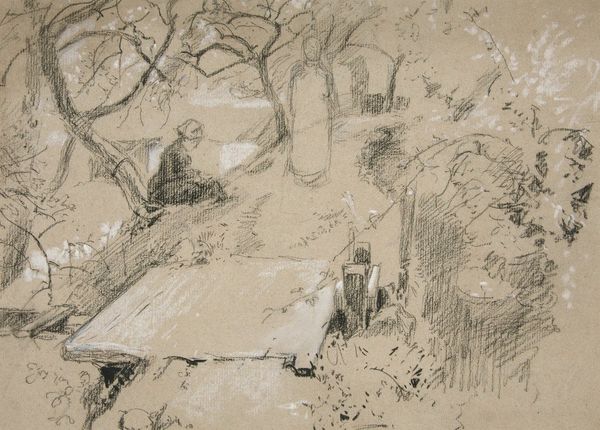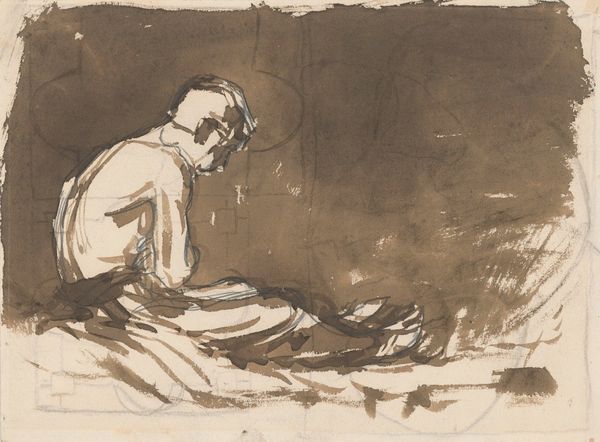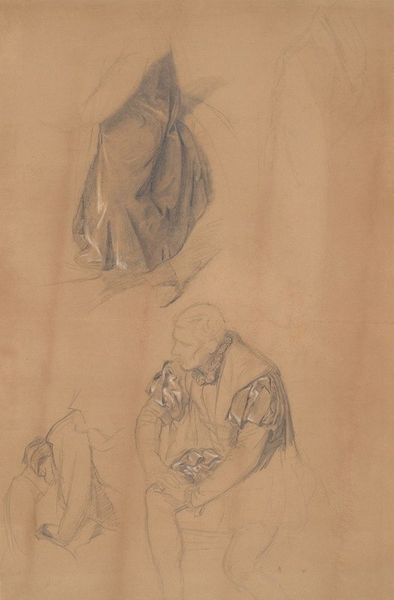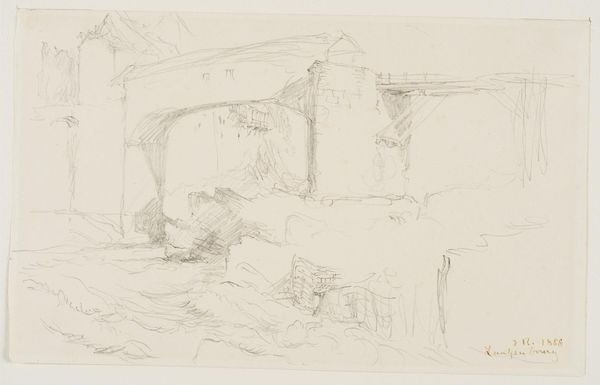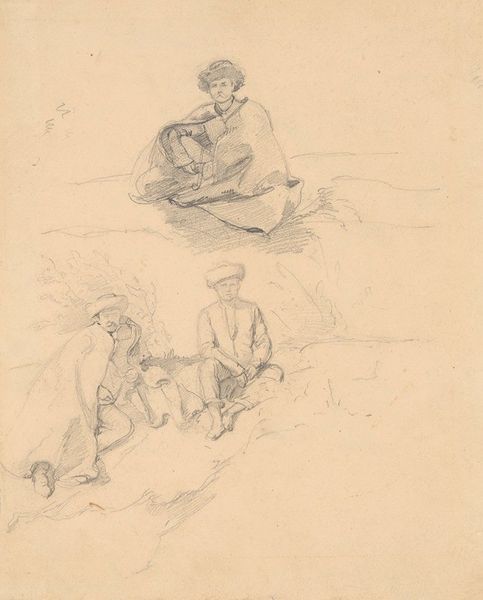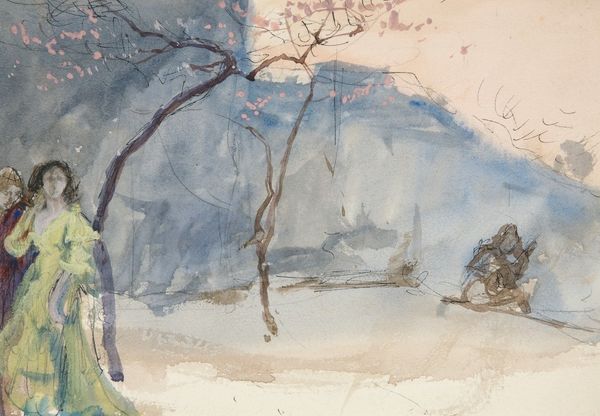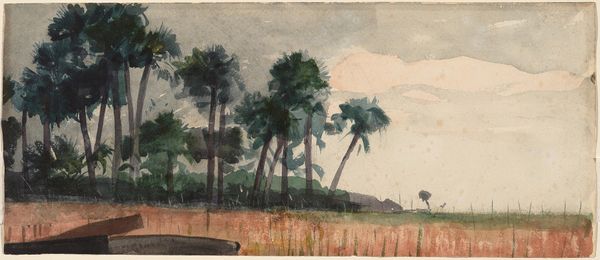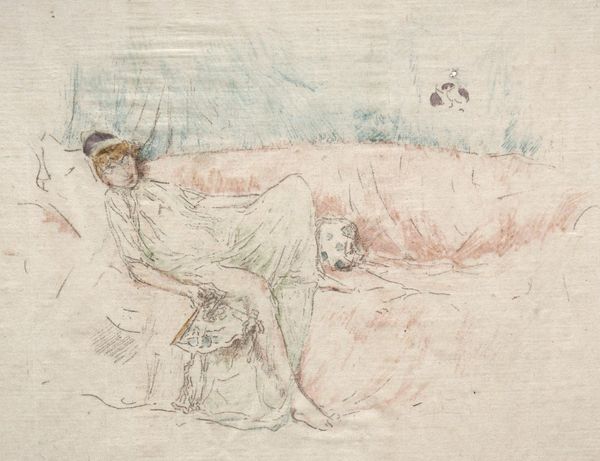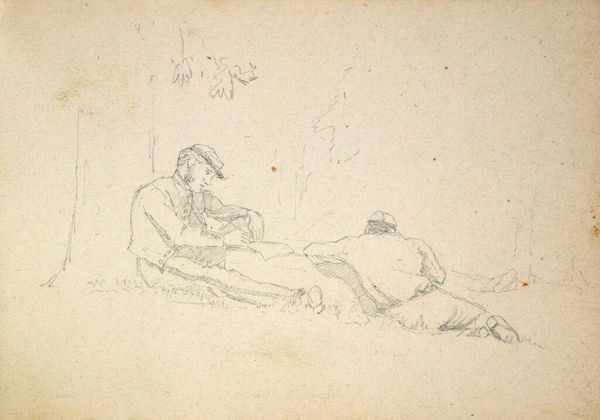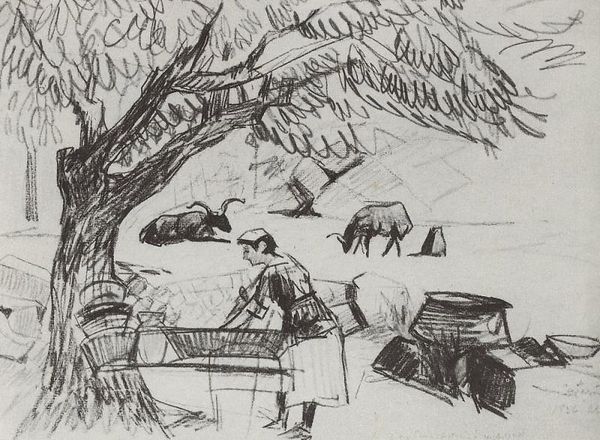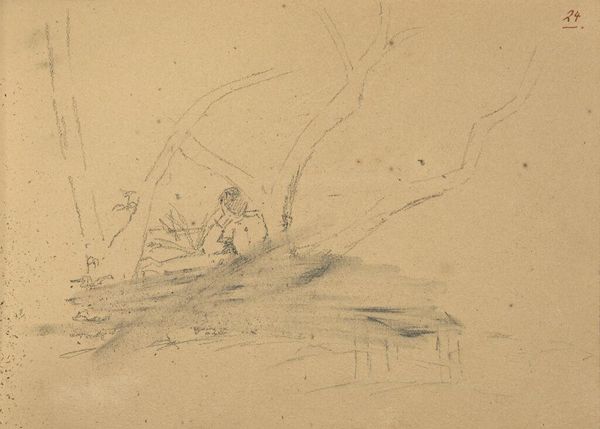
drawing, plein-air, watercolor
#
drawing
#
plein-air
#
landscape
#
watercolor
#
romanticism
#
genre-painting
Copyright: Public Domain: Artvee
Curator: Let's turn our attention to John Frederick Lewis's "On the Terrace at Ischia, Italy," a watercolor and pencil drawing from 1829, rendered en plein-air. What's your initial reaction? Editor: There's a dreamlike quality, almost faded in places, yet imbued with a strange vibrancy. The figure dominates, but he's simultaneously part of, and separated from, the hazy landscape. The red cap draws your eye immediately, a vivid pop against the muted earth tones. Curator: Lewis, throughout his career, actively positioned himself as a traveler encountering the "Orient," negotiating its cultural representations in the British imagination. We have to consider his role in perpetuating these visual stereotypes when interpreting scenes like this, despite their seeming placidity. Editor: I see echoes of earlier symbolic forms here, that recumbent figure for example. Consider its resonance with classical depictions of river gods, or even allegories of Sloth. Do you think he deliberately invoked those cultural memories? Curator: It's plausible. Though trained in a British landscape tradition, Lewis was engaging with continental Romanticism and its preoccupation with representing nature as both sublime and picturesque. But, from a postcolonial perspective, it's hard to ignore how the land itself becomes a passive object to be consumed by the artist's, and by extension, the British gaze. The figure resting there seems to epitomize the Westerner at ease, overlooking appropriated terrain. Editor: Yes, but the landscape itself evokes particular themes that permeate through cultures - the garden, the haven. I can imagine parallels in many societies of how land and cultivated landscapes provide this kind of backdrop for idealized existence, rest and even paradise. It speaks to deeper, cross-cultural concepts. Curator: Those threads certainly exist, but their entanglement with histories of domination necessitates that we proceed with caution when engaging in ahistorical or decontextualized readings. This artwork offers such a compelling intersection between technique, Romantic aesthetics, and, undeniably, imperialist ideology. Editor: I agree, this small image offers plenty to consider - a glimpse of how our need to find comforting, grounding, images exists simultaneously with narratives of global conflict.
Comments
No comments
Be the first to comment and join the conversation on the ultimate creative platform.
